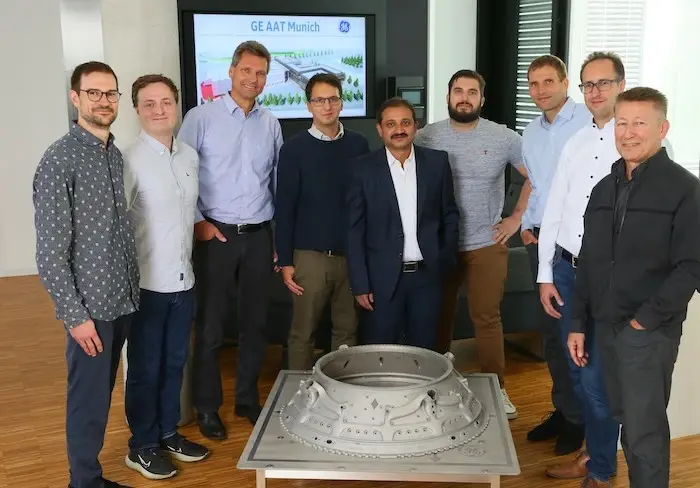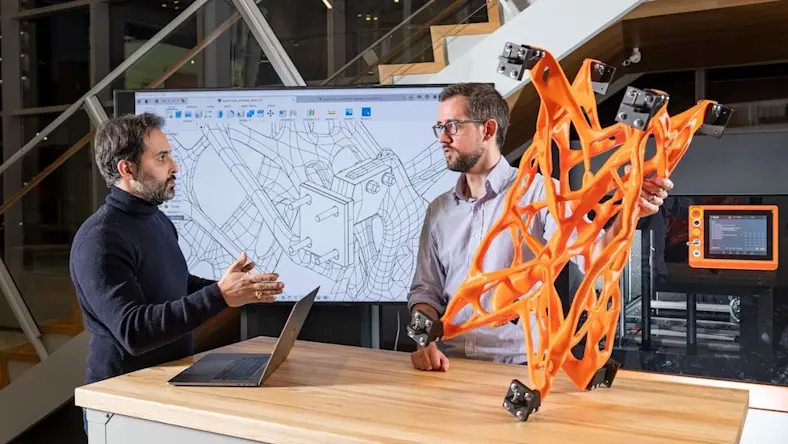& Construction

Integrated BIM tools, including Revit, AutoCAD, and Civil 3D
& Manufacturing

Professional CAD/CAM tools built on Inventor and AutoCAD
On Dec. 17, 1903, what seemed like a miracle at the time took place in the skies over Kitty Hawk, NC. That’s when brothers Orville and Wilbur Wright—bicycle shop owners from Dayton, OH—completed the first-ever powered, sustained, and controlled flight of a heavier-than-air aircraft. Their plane, the Wright Flyer, stayed airborne for just 12 seconds, traveled 120 feet, and reached a top speed of 6.8 miles per hour. Its impact, however, was as large as the flight was brief: Nearly 120 years later, aviation is a massive industry that supports 87.7 million jobs, enables more than one-third of all trade, and drives 4.1% of the world’s gross domestic product (GDP).
Aviation is so big that if it were a country, its economy would rank as the 17th largest in the world—roughly the size of Indonesia or the Netherlands, according to the Air Transport Action Group (ATAG), which says demand for air transport is expected to increase by an average of 3% per year over the next 20 years, supporting 143 million jobs and $6.3 trillion in GDP by 2038.
That’s good news for the millions of global tourists who want to indulge their insatiable wanderlust and for the many global enterprises that want to do business across borders and oceans. It may be bad news, however, for the environment, because aviation produces approximately 2.4% of global carbon emissions, according to the Environmental and Energy Study Institute (EESI).
Although that’s less than the carbon emissions produced by automobiles, electricity production, and the industrial and agricultural sectors, it’s large enough that if commercial aviation once again were a country, it would be the sixth largest polluter in the world, ranking between Germany and Japan. Even when you take into account improvements in aircraft efficiency in the past 60 years, passenger air travel prior to the COVID-19 pandemic was the fastest-growing source of greenhouse gas emissions in the world, EESI reports.
Aviation critics—for instance, Dutch environmental group Fossielvrij NL, which in July filed the aviation industry’s first-ever greenwashing lawsuit against Dutch airline KLM—insist that the only way to reduce air transport’s impact is to fly fewer planes. But the aviation sector is bullish on the power of engineering to reduce flying’s environmental impact by leveraging advanced technologies without stunting the industry’s growth.
Because it’s committed to exactly that mission, the European Union’s Clean Aviation Joint Undertaking, building on its predecessor Clean Sky 2 Joint Undertaking, has issued approximately €4 billion in grants to research projects aimed at increasing aircraft fuel efficiency, with the ultimate goal of reducing net greenhouse gas emissions by at least 30% by 2030. Among Clean Aviation’s beneficiaries are GE Aerospace’s Advanced Technology team in Munich, the Dresden University of Technology, and a consortium supporting technology maturation lead by Hamburg University of Technology and joined by Autodesk UK, which together have formed a joint research effort to reimagine more energy-efficient next-generation aircraft engines.
Known as MOnACO (short for “manufacturing of a large-scale additive manufacturing component”) the joint research effort focuses on the design, optimization, and validation of a large-scale aircraft engine’s turbine component via additive manufacturing. The component in question, the turbine center frame, is as complex as it is vital, consisting of more than 100 individual parts.
“What we ultimately set out to do was merge those parts into one,” says Andy Harris, a senior principal research engineer at Autodesk Research in London. Streamlining the turbine center frame makes the component easier to manufacture and, most important, lighter. “By reducing the weight of the turbine center frame, you use less fuel and therefore produce fewer carbon emissions. Also, using less fuel makes the aircraft cheaper to operate. So there’s an economic benefit as well as an environmental benefit.”
But amalgamating more than 100 parts is no easy task. To accomplish it, MOnACO leveraged both generative design and additive manufacturing. First, the team defined its design parameters and performance requirements. Then it used Autodesk Fusion 360 to automatically generate a slew of design options utilizing an array of different materials and manufacturing processes.
“The software gives you information about the performance of the design—things like stiffness and strength and safety factors—as well as the mass and the cost of the part based on the material, the manufacturing, and the design itself,” Harris says. “So it generates all these designs in the cloud, and then you can get rid of the ones that are too expensive, perhaps, or too heavy. It’s a really powerful way of doing very quick design exploration.”
The team ultimately went through four different design iterations, and each underwent rigorous testing.
“We initially did structural simulation, fluid simulation, and manufacturing simulation, and then we would go and make some of these parts in Hamburg and test them in Dresden,” says Harris, who adds that the team then compared the actual performance of physical prototypes to its simulations. “Every time we did that, we got a better understanding of the real behavior of the part and used that to inform the next design iteration. Each time we were able to improve stiffness, mass reduction, and pressure drop within the system until we ended up with our fourth and final iteration.”
A key benefit of the team’s final iteration is aerothermal management courtesy of a latticework design achieved using Autodesk Volumetric Kernel, a new tool within Fusion 360 that facilitates design around extremely complex geometry.
“There are a lot of hot gases going through this part of the engine, which gets extremely hot and tends to lose a lot of heat,” Harris says. “By using a lattice to separate an inner skin that gets hot from an outer skin, heat transfer from the inside to the outside is significantly reduced. Over the lifetime of the engine, we estimate that this will save 16 gigajoules of heat energy, which means more energy is going through the engine, driving the turbine, and coming out the back of the engine.”
Put simply, the engine runs more efficiently.
But that kind of efficiency isn’t attainable through conventional manufacturing processes. The team therefore turned to additive manufacturing—specifically, laser powder-bed fusion, wherein metal powder is built up gradually in layers and sintered using a high-power laser.
“Additive manufacturing offers the design freedom to build almost everything that might come out of a generative design approach,” says Dirk Herzog, a researcher at the Hamburg University of Technology. “The technology has clearly demonstrated its potential for enormous mass savings, which cannot be achieved otherwise.”
In this case, the mass savings are more than 30%, according to MOnACO, which, upon finalizing its design, manufactured a full-scale prototype in a GE additive facility with additional post-processing done in an Autodesk facility to verify the printed design against the intended design. Because of the rigorous safety standards that exist in aviation, it will likely be years before the part can be incorporated at scale into real aircraft. Nevertheless, the project is an important next step to realizing meaningful improvements in the environmental impact of aviation.
“Aviation is still contributing significantly to carbon emissions,” Herzog says. “And while electric flying might solve this in the long term, any possibility to reduce emissions of fossil fuel-powered aircrafts needs to be leveraged in the meantime.”
The potential is enormous, according to Ashish Sharma, advanced lead engineer for GE Aerospace’s Aviation Technology in Munich, who says the project proves the viability of generative design and additive manufacturing for large-scale parts and components. “The whole aerospace industry is very excited and interested,” he says, emphasizing that the same technologies and processes can be applied to other engine parts to achieve even greater efficiency from nose to tail.
“The substantial reduction of the part counts also contributes to improving competitiveness by reducing assembly costs and time,” says Christina-Maria Margariti, project officer for the Clean Aviation Joint Undertaking.
Clean Aviation supports launching disruptive new products by 2035, with the aim of replacing 75% of the operating fleet by 2050. Manufacturing speed then is a critical benefit—especially in the European Union, which has committed to having a carbon-neutral economy by 2050 as part of its European Green Deal initiative. “Faster time to market and increased production rates are thus needed in order to achieve entry into new aircraft service by 2035 and a sufficiently high fleet replacement rate to reach the environmental targets by 2050,” she says. ”Any improvement in terms of design and manufacturing process times will be highly beneficial to achieve these objectives.”
Matt Alderton is a Chicago-based freelance writer specializing in business, design, food, travel, and technology. A graduate of Northwestern University's Medill School of Journalism, his past subjects have included everything from Beanie Babies and mega bridges to robots and chicken sandwiches. He may be reached via his website, MattAlderton.com.
Emerging Tech
Executive insights
PD&M





